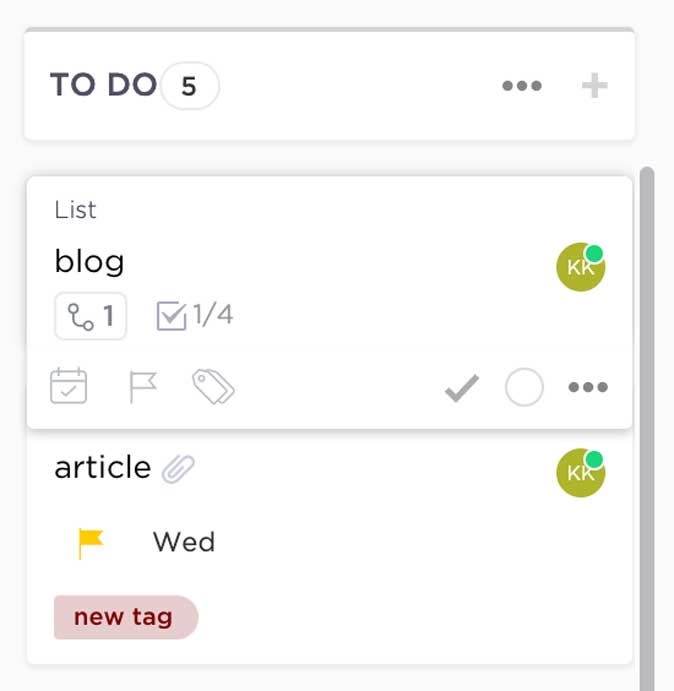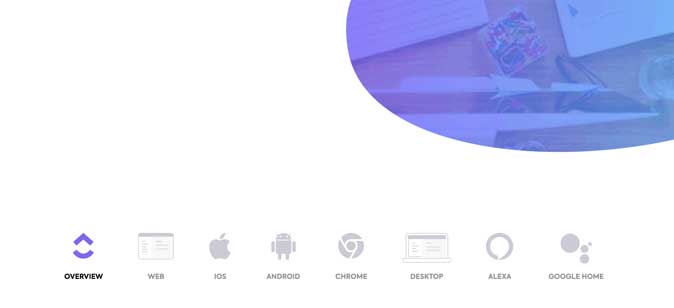At TechWiser, we use Trello to keep track of workflow, and to be honest, it’s one of the best ways to organize and track tasks. I recently read about ClickUp, it’s the new kid on the block that’s making waves claiming to be a better alternative to Trello. On the surface, it looks promising but I decided to dig a little deeper and find out how ClickUp compares with Trello in real-world usage. Let’s begin.
Before We Begin
I use Trello to manage my day-to-day tasks and my entire workflow. It is extremely simple to get started with and has intuitive features. The Kanban board layout helps me prioritize my tasks, due-dates keep me up to date with deadlines, and labels offer versatility. ClickUp, on the other hand, offers multiple layouts to choose from such as boards, lists, calendars, mindmaps, tables, etc. In this comparison, I’d focus on features offered by Trello and how ClickUp holds up to those. I’d also comment on the use case of extra features offered by ClickUp and how practical they are.
User Interface
ClickUp offers a modern interface to organize your tasks and manage projects. The boards are called Status and the cards are named Tasks which makes sense but visually, these ‘tasks’ offer little information at a glance. Editing and creating new tasks and statuses is easy and you’d get used to the interface in no time.

Trello has arguably a better user interface in my humble opinion because the board elements are distinct and easily noticeable. The labels are brightly colored, the due-date is well-placed, and the attachments show a preview of the list itself. Even though ClickUp has a feature-rich interface, I prefer the simplicity of Trello but to each his/her own. UI can be subjective in nature.

Score
- ClickUp: 0
- Trello: 1
Ease of Use
ClickUp is a well-designed tool that takes care of all the tasks you have and organizes them in different layouts. However, it can be intimidating for someone migrating from Trello or joining the team for the very first time. The board layout is fine but the tasks’ cards look a mess. There is no sense of borders and the workspace is filled with complex actions which makes it unintuitive.

Trello, on the other hand, is a breeze to walk-through. All you need to do is label your lists and start adding cards that you wish to focus on. Each card has well-defined parameters that you can recognize at a glance. My favorite part is the ability to change the background wallpaper. It’s a practical approach and if you don’t require other layouts then Trello would make you feel at home.

Score
- ClickUp: 0
- Trello: 2
Availability
ClickUp offers an app for every platform such as iOS, Android, Web, Windows, Linux, Mac, and Chrome. However, ClickUp can integrate with Alexa, Google Assistant, Gmail, and Outlook to offer seamless task creation. It’s a clear advantage over Trello which offers support for both mobile and desktops but lacks support for digital assistants and emails.

Score
- ClickUp: 1
- Trello: 2
Boards and Beyond
ClickUp has gone beyond just Kanban-style boards and offers multiple ways to look at your tasks. Along with boards, you have lists, Calendars, Maps, Activity, Mindmap, Table, Checklist, Timeline, Workload, etc. This feature takes the software to the next level and you can use ClickUp in your organization, no matter how obscure it might be.

Trello was exclusively a Kanban-style board that worked for most people due to its simplicity. However, keeping up with the competition, Trello has also introduced Timeline, Tables, Dashboard, and Calendar to its feature set but it’s only available on the paid plans. That being said, ClickUp offers a better feature set.

Score
- ClickUp: 2
- Trello: 2
Tasks and Cards
While they may be named differently, Tasks and Cards are essentially the same things. On ClickUp, a Task helps you breakdown a project into more manageable chunks. On both ClickUp and Trello, you can add due-dates, assign tasks to users, set priority, add tags and attachments, and leave comments.

However, ClickUp has additional functions that make Tasks a better option. You can directly move a Task to the next Status with a click, create subtasks, create dependencies, and even add a dedicated checklist for that specific task. Unarguably, ClickUp is the clear winner here. Note that you can also create a checklist in Trello inside each card.

Score
- ClickUp: 3
- Trello: 2
Free Plan Offerings
Now, let’s talk specifics about the actual workspace that would decide the fate of the two. ClickUp calls the board Spaces and offers 5 on the free plan, it offers a mediocre 100MB storage space, 100 automation/month, and a 1-day activity log.
Trello offers 10 boards on the free plan with unlimited storage space (10MB/file size limit), 50 automation/month, and unlimited activity logs. However, most of these restrictions are gone on the paid plan on either of those apps so it becomes pointless if you’re a paying customer. On that note, Trello does have better offerings on the free plan.

Score
- ClickUp: 3
- Trello: 3
Pricing
Free plans aside, every growing business would need a paying plan eventually. ClickUp is offering the Unlimited plan that starts at $5/mo/user when billed annually. Trello, on the other hand, offers it at $10/mo/user when billed annually. There isn’t any significant difference in the features offered in this price tier but when you have a number of users/employees, that $5 difference can quickly add up.
Verdict: ClickUp vs Trello
Based on the comparison above, both ClickUp and Trello meet in the middle with a similar feature set but ClickUp has many more advantages. For example, ClickUp offers beyond simple cards and puts in sub-tasks, checklists, and dependencies. It greatly increases the level of organization you can have with those features. ClickUp can also increase accountability with assigned comments that need to be resolved. To sum it up, ClickUp has tiny features like reminders, hierarchy charts, workload charts, etc. that set ClickUp apart from Trello.
You can still opt for Trello if you’re a freelancer or have a small organization because Trello is arguably better when you just need a Kanban-style board for organizing work. For growing businesses that need efficiency in work, use ClickUp. What do you think? Which is the best choice for you? Let me know on Twitter.
Also Read: Notion vs ClickUp: Which Project Management Software Is Better?